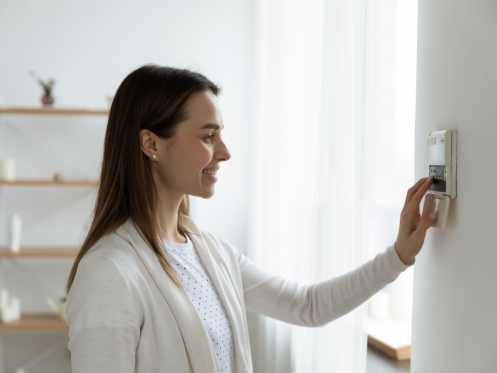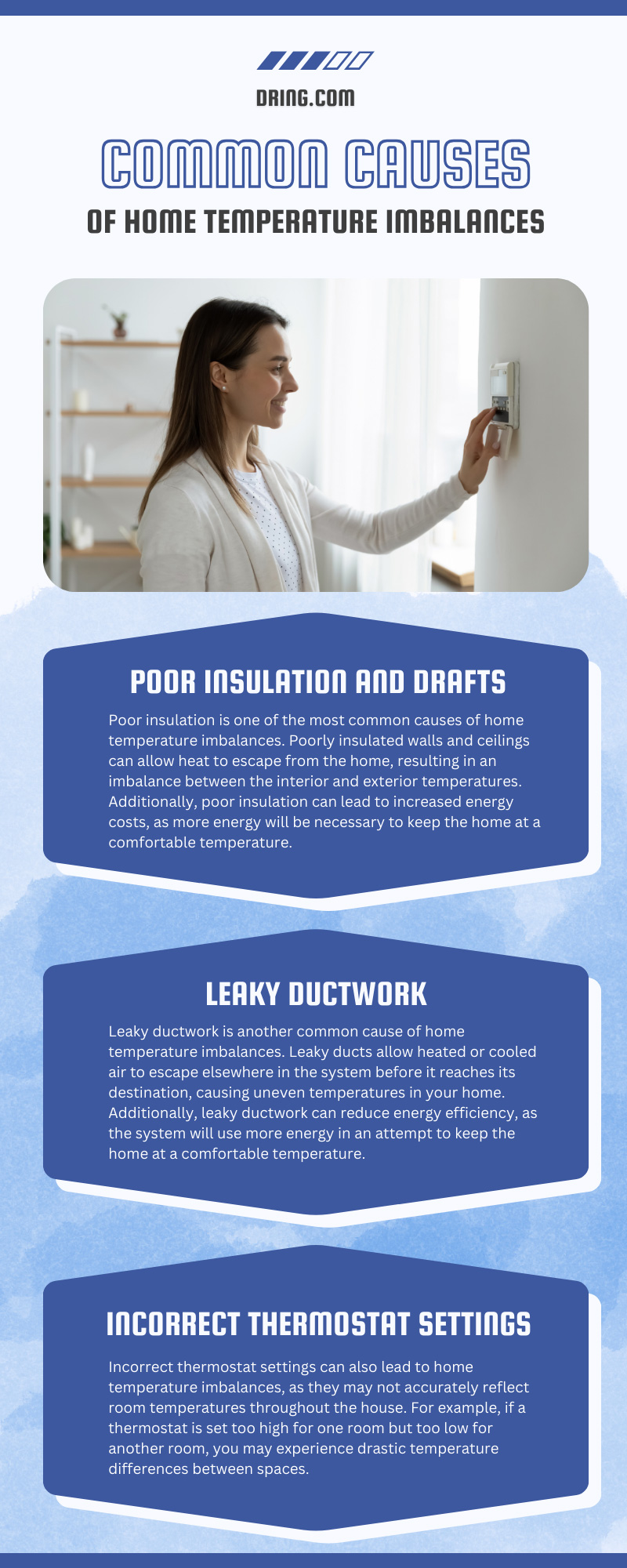Do you ever feel like some rooms in your house are too hot while others are too cold? It’s a common issue for many homeowners, and it can be extremely uncomfortable. You may already know that improper insulation and ventilation can cause home temperature imbalances, but what underlying causes could contribute to those issues?
Explore the most common causes of unequal temperatures in your home and how to fix them so that you and your family can stay comfortable all year. The last thing you want is to pay hefty utility bills for something that would be easy to fix.
Poor Insulation and Drafts
Poor insulation is one of the most common causes of home temperature imbalances. Poorly insulated walls and ceilings can allow heat to escape from the home, resulting in an imbalance between the interior and exterior temperatures. Additionally, poor insulation can lead to increased energy costs, as more energy will be necessary to keep the home at a comfortable temperature.
Drafts are another common cause of home temperature imbalances. Drafts occur when warm air escapes through gaps or cracks in windows and doors, allowing cold air to enter the home. Drafts can also happen around vents or other openings in the wall or ceiling, resulting in a temperature imbalance between different rooms. It’s essential to have proper insulation in your home and prevent air and heat from escaping. Check for any cracks or gaps between your windows and doors. Use caulk to seal unwanted gaps and prep windows for upcoming seasonal weather changes to avoid hefty utility costs.
Leaky Ductwork
Leaky ductwork is another common cause of home temperature imbalances. Leaky ducts allow heated or cooled air to escape elsewhere in the system before it reaches its destination, causing uneven temperatures in your home. Additionally, leaky ductwork can reduce energy efficiency, as the system will use more energy in an attempt to keep the home at a comfortable temperature.
Ensuring your ductwork remains attached to air conditioning units and repairing damages can regulate temperatures. A professional air conditioning and heating technician can help you inspect for leaks and damages in your ductwork.
Inadequate Heating and Cooling System
An inadequate heating or cooling system can also lead to home temperature imbalances. If a heating or cooling system is too small for a given space, it may not be able to adequately heat or cool all areas of the house.
Additionally, an inadequate system may need to run longer than necessary to maintain comfortable temperatures, leading to increased energy costs. So, it’s essential to have your air conditioning and heating system inspected for air filter clogs, frozen evaporator coils, leaks, and other signs of damage. Furthermore, efficient AC and heating unit maintenance can prevent hefty repair and replacement costs.
Incorrect Thermostat Settings
Incorrect thermostat settings can also lead to home temperature imbalances, as they may not accurately reflect room temperatures throughout the house. For example, if a thermostat is set too high for one room but too low for another room, you may experience drastic temperature differences between spaces.
Furthermore, incorrect settings may cause a heating or cooling system to run longer than necessary, leading to higher energy costs. Ensure your heating and cooling system aligns with your daily routine, seasonal changes, and proper ventilation efficiency.
Consistent Sun Exposure
Sun exposure is another common cause of home temperature imbalances, as certain rooms may become hotter than others due to direct sunlight coming through windows during certain times of day. This natural light can be especially problematic during summer months when direct sunlight heats the space.
It’s important to use window treatments on windows that receive direct sunlight, such as blinds, shades, and curtains, to combat this issue. This step can considerably reduce discomfort and excessive heat.
Poor Ventilation
Poor ventilation can also lead to uneven temperatures within a home, as the home traps stale air in certain areas while fresh air circulates through other areas. This issue often stems from an inadequate ventilation system that cannot move enough fresh air throughout all areas of a house.
As a result, stale air stays within certain parts of a home while other areas remain cooler and more comfortable. Homeowners should routinely hire a professional to maintain and inspect their ventilation systems. Furthermore, opening a couple of windows throughout the house can create a consistent cross breeze. This measure brings in fresh air from outside, which can make the space more comfortable.
Improperly Sealed Doors and Windows
As previously mentioned, improperly sealed doors and windows are another common cause of home temperature imbalances, as outside air can easily enter through these openings.
This issue often results in one area being colder than others due to outside air entering that area and making it difficult for heating or cooling systems to keep up with demand. Homeowners should regularly inspect their doors and windows for any signs of damage and make repairs to prevent this issue from occurring. Properly sealing the space helps decrease energy costs and prevents extreme temperatures from affecting your home.
Furniture Placement
Furniture placement can contribute to uneven temperatures within a home when furniture pieces—especially large ones—block vents and radiators, preventing air from circulating throughout the home.
Homeowners should place furniture pieces away from vents and radiators so that adequate air circulation can thoroughly travel. Furthermore, furniture should sit roughly a foot away from ducts and furnaces to ensure proper temperature displacement.
Humidity Levels
High humidity levels can also contribute to uneven temperatures within a home. High humidity levels make it difficult for heating and cooling systems to effectively regulate indoor temperatures due to moisture buildup on surfaces such as walls and ceilings. This moisture barrier acts like an insulator against heat transfer.
Homeowners facing this issue should invest in dehumidifiers, which help reduce humidity levels inside homes. The dehumidifier’s efforts can make it significantly easier for AC and heating systems to maintain desired indoor temperatures.
Keeping your home comfortable throughout the year requires exceptional air conditioning and heating systems. Dring offers excellent air conditioning and heating repair services in the state of Texas, ranging from repairs and installations to duct and ventilation cleaning. Our AC services in Fort Worth, TX, give homeowners and professional establishments peace of mind for everyday repairs and complex temperature control system maintenance. Ask us about our repair and installation services today.








